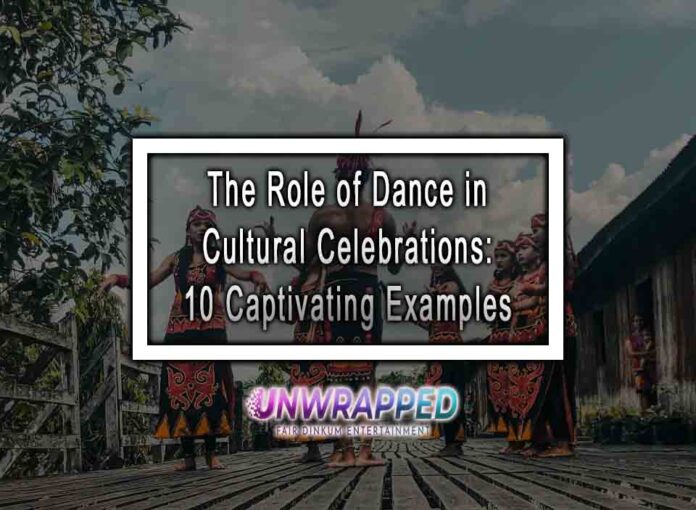The Transformative Power of Dance in Cultural Celebrations
Fun Title: “Shaking Up Traditions: How Dance Brings Cultural Celebrations to Life”
When it comes to cultural celebrations, dance plays a pivotal role in uniting communities, expressing deep-rooted traditions, and celebrating the vibrant heritage of a group of people. From rhythmic movements that tell stories to energetic performances that ignite joy, dance has the incredible ability to captivate and connect individuals across different cultures. Join us on a global journey as we explore ten captivating ways dance transforms cultural celebrations around the world.
1. Flamenco: The Soulful Expression of Spain
Flamenco, born in the region of Andalusia, Spain, is a passionate dance form that embodies the rich emotions of love, sorrow, and triumph. With intricate footwork, hand gestures, and vibrant costumes, Flamenco encapsulates the spirit of Spanish culture and is often performed during festivals like Feria de Abril and La Tomatina.
2. Haka: The Powerful War Dance of New Zealand
Originating from the Māori people of New Zealand, the Haka is a ceremonial dance known for its powerful stomping, chest-slapping, and fierce facial expressions. Originally performed before battles, the Haka now serves as a symbol of unity and pride during significant events such as weddings, funerals, and international sports competitions.
3. Bharatanatyam: The Classical Dance of India
Bharatanatyam, one of the oldest classical dance forms in India, is a mesmerizing combination of intricate footwork, graceful hand gestures, and expressive facial expressions. Often performed during religious ceremonies and festivals like Navaratri, Bharatanatyam narrates mythological tales and showcases the cultural heritage of the country.
4. Samba: The Energetic Beat of Brazil
Samba, a lively dance style originating in Brazil, is synonymous with the vibrant Carnival celebrations held across the country. Characterized by quick hip movements, colorful costumes, and infectious rhythms, Samba encapsulates the joy and spirit of the Brazilian culture, inviting everyone to join in the festivities.
5. Lion Dance: The Mythical Performance of China
The Lion Dance, a traditional Chinese dance performed during Lunar New Year and other auspicious occasions, combines martial arts, acrobatics, and elaborate lion costumes. The dance is believed to ward off evil spirits and bring good luck and prosperity to the community.
6. Hula: The Graceful Storytelling of Hawaii
Hula, a sacred dance form of the Hawaiian Islands, weaves together graceful movements, melodic chants, and storytelling. Each motion of the hands and hips represents elements of nature, historical events, or spiritual concepts, making Hula a significant part of Hawaiian cultural celebrations.
7. Tango: The Passionate Dance of Argentina
Tango, originating in the late 19th century in the neighborhoods of Buenos Aires, Argentina, is a sensual and passionate dance form. With its intricate footwork, close embrace, and evocative music, Tango not only celebrates Argentine culture but also serves as a universal symbol of love and passion.
8. Polynesian Haka: The Fierce Dance of the Pacific Islands
The Polynesian Haka, performed in various Pacific Island cultures, is a powerful dance form that combines strong movements, chanting, and facial expressions. Traditionally performed by warriors before battles, the Haka has evolved into a spirited celebration of identity and unity among Polynesian communities.
9. Irish Step Dance: The Rhythmic Heritage of Ireland
Irish Step Dance, known for its lightning-fast footwork and precise movements, has become an emblematic part of Irish culture. Often performed during St. Patrick’s Day celebrations and cultural festivals, this lively dance style embodies the rich history and folklore of Ireland.
10. Carnival of Oruro: The Vibrant Bolivian Spectacle
The Carnival of Oruro in Bolivia showcases a dazzling display of traditional dances, rituals, and vibrant costumes. From the iconic Diablada dance portraying the battle between good and evil to the rhythmic Caporales dance that pays homage to African and Indigenous influences, the Carnival of Oruro celebrates Bolivia’s cultural diversity and traditions.
Conclusion:
The Global Impact of Dance in Cultural Celebrations
Fun Title: “Dancing Across Borders: Uniting the World through Cultural Celebrations”
Dance serves as a universal language that transcends barriers, connecting people from various backgrounds and fostering an appreciation for cultural diversity. Whether it’s the soulful Flamenco of Spain, the powerful Haka of New Zealand, or the energetic Samba of Brazil, dance plays a transformative role in cultural celebrations worldwide. By preserving traditions, telling stories, and spreading joy, dance continues to shape and enrich our collective human experience. So, let’s celebrate the power of dance and embrace the beauty it brings to cultural celebrations around the globe.
Don’t Miss Out: Demystifying Abstract Art: A Comprehensive Guide










